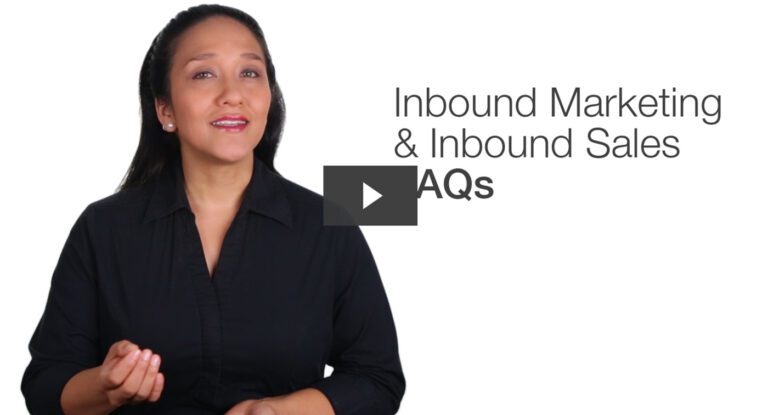It has taken a while, but user experience has become a vital part of the success of companies of all sizes in every industry. Having an enjoyable digital experience to provide for website visitors is crucial. There are a lot of moving parts, and some research and strategy may require you to roll up your sleeves and get down to work. Let’s clarify some of the ways you can improve the user experience research process and better your company’s website with interactive marketing and growth driven design.
How do I incorporate user experience design in for our company’s website?
You may already be familiar with this term already, but here’s a brief refresher. User experience is just that—focusing on the experience of the user and how they interact with a specific product or service. What makes user experience seem complicated is when users are interacting with websites. From slow load speeds to cluttered navigation, the design elements in some company websites put the user in the backseat. Here’s a brief look into user experience design and how to be more relevant to your customers with the following video:
For more information on how to create a unique and memorable user experience for your company, take a look at the following articles listed below:
- The Elements of UX Design and Creating a Memorable User Experience
- FAQ Friday: Creating a User Experience in 2016
- How to Create a Winning User Experience in 2016
- Creating a User Experience for Better Website Visibility
How do I begin the process of improving user experience?
Well, improving user experience has a lot of components. But starting out doesn’t need to be complicated. You can start by considering some A/B testing or usability testing to identify issues that may be present in your site.
You can also poll your users, conduct in-person beta tests, use heat maps, develop buyer personas, or use a mixture of these tactics. If you are not sure where you stand with your current site, it may be best to start with your buyer persona profiles. This is especially true if your website is outdated. Buyer personas will give you a jumping off point to build a meaningful user experience strategy. For more ways to improve your user experience, check out these articles:
- How to Develop Creative Marketing Solutions to Improve User Experience
- How Creative Media Marketing Can Improve User Experience
- Lead Nurturing Best Practices for a Unique User Experience
- Provide A Better User Experience with Interactive Images
When and where do I begin to conduct user experience research and buyer persona development?
How important is the buyer’s journey to the user experience?
Pretty important. In order to provide an optimal experience to your visitors, you have to know what they are there for, right? Each website has a different experience for each of its visitors. To get a firm start in solidifying what your website and brand experience will be, base your user experience on in-depth data about your users. Break down the needs, wants and habits throughout each stage of the buyer’s journey. Once you have a baseline, you can begin to observe how the users interact with the current framework of your website. For information on how to build longer and richer customer lifecycles with user experience, check out these listed articles:
- Thought Leadership Monday Mashup: Customer Lifecycle Exploration
- Customer Lifecycle Marketing Strategy Framework
- Increase Customer Retention Rate with Lifecycle Marketing Analytics
- Explore the Benefits of Customer Lifecycle Marketing Strategy
What is interactive marketing?
Interactive marketing is all based on the user. By taking in-depth notes on the habits of your user and effectively responding with appropriate, personalized messages tailored to those habits, this process is the key definition to interactive marketing. Interactive marketing makes everything that the user does as vital information—making it typically 2-12 times more effective than traditional direct marketing.
For more insight on how to use interactive marketing for your company, explore the following articles:
- How Interactive Marketing Can Improve User Experience
- Step Outside of the Box with Interactive Marketing Solutions
How do I connect with my website visitors to understand them better?
There are many ways to connect to your visitors, users, and customers. One of the most revealing methods of a website visitor’s behavior is to have a test group. Put your website into your frequent users’ hands and have them interact with your site. Note their reactions, questions, and glean insight on how they use your site. For more on getting to know your buyer personas and developing a useful buyer persona profile to understand your visitors’ behavior, start here with these articles:
- Attract Visitors, Convert Leads, Close Customers, Delight Promoters with Inbound Marketing
- Deploy a Winning Keyword Strategy to Please Website Visitors & Boost SEO
What is the difference between traditional website design and growth driven design?
A traditional website is created around your company. It’s main focus is how to highlight your company by suiting the wants and needs of solely your perspective. A traditional website also means that you lack hands on control over your website—requiring your website to remain static for 1 to 2 years or more before a redesign process is even encouraged. Because with traditional websites, they are built by developers based on assumptions of current design trends that your audience may or may not like in the end. And with potentially high expenses that come with building a website or even a website redesign, you want to make sure that your decisions are effectively using your investments wisely.
Power users don’t decide very much based on aesthetics. “Look & Feel” creates appeal, not loyalty.—Joel Marsh
But now you can minimize the assumption gap with Growth Driven Design. Growth Driven Design and interactive marketing are two side of the same coin. They are both user focused, and projects are created in response to extensive user data, i.e., needs and behaviors. Growth Driven Design, however is mainly used and discussed around web development and design. By using existing user data to create a launch pad website, you quickly and effectively put your website in your audience’s hands—taking the remaining time it used to take in the past to learn, plan, and improve metrics through a continuous redesign process. Through this continuous process, you not only have a living and active website that is up to date to meet your needs, but is more importantly up to date to meet the needs of your users. For more information on the benefits of Growth Driven Design and how it is effective with improving user experience, start off with this article:
Interactive Marketing and Growth Driven Design can sound like a scary high-tech thing you’re not equipped to address, but that’s not the case at all. It’s all about understanding your target audience, and developing an experience that is tailored to them. Use some of the takeaways we’ve presented, and start improving your user experience, little by little.
To see examples of interactive video and to read more about how it can help you, explore here or watch a replay of our live streaming event about interactive video by clicking the banner below.
Subscribe to our BLOG
Stay in touch & learn how to attract customers, become a thought leader, create effective marketing campaigns, & more.





